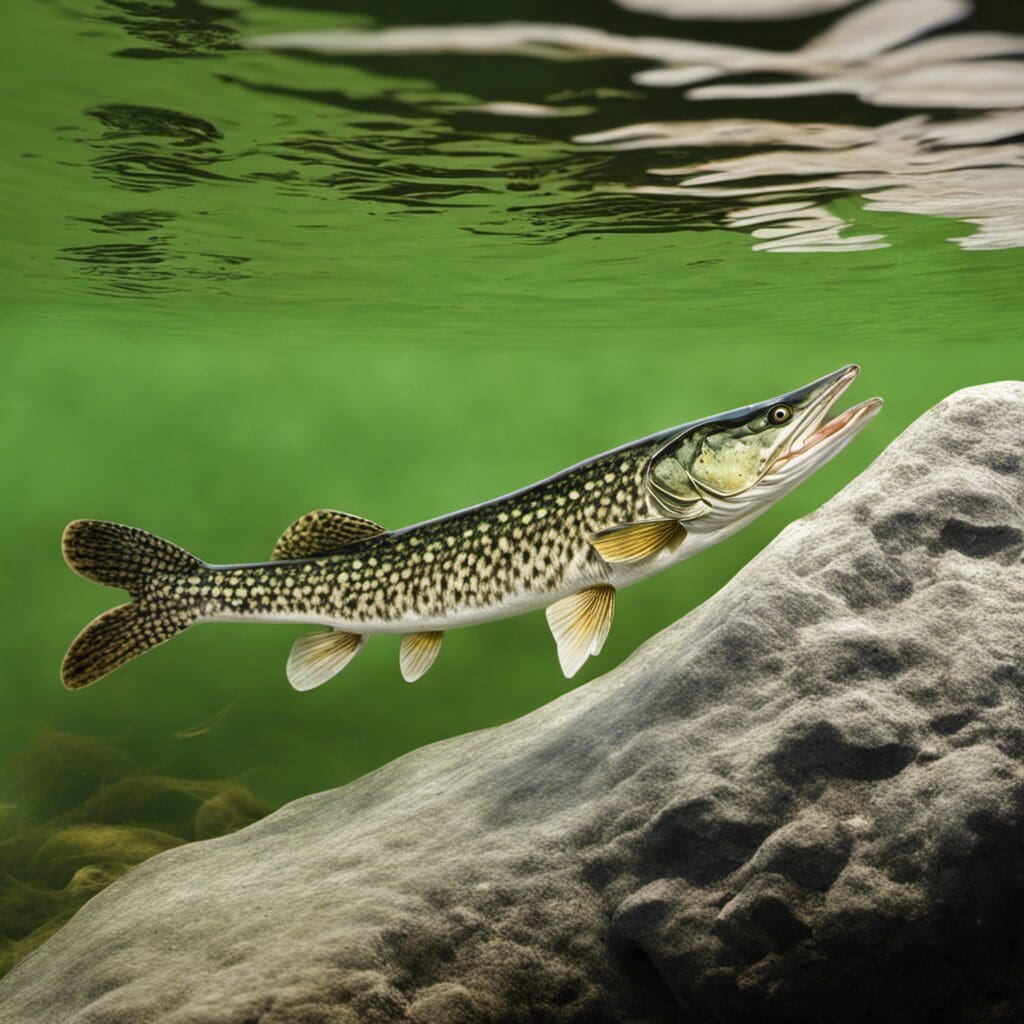Introduction
The Northern Pike, scientifically known as Esox lucius, is a carnivorous species of fish from the family Esocidae.
Conservation Status
The Northern Pike is not endangered and is categorized as a species of ‘Least Concern’ according to the IUCN Red List. Conservation efforts include regulations on fishing limits and size, habitat protection, and restocking programs.
Statistics
| Measurement | Average | Range |
|---|---|---|
| Length | 70-120 cm | 30-150 cm |
| Weight | 3-7 kg | 0.5-25 kg |
| Average Lifespan | 7 years | – |
Distribution
Northern pikes are most prevalent in the northern hemisphere, specifically in North America and Eurasia. Their migration patterns are based primarily on water temperature and food availability.
Habitats
The Northern Pike is usually found in freshwater bodies like lakes, rivers, and streams. They prefer temperatures ranging from 4 °C to 22 °C and are found in all depth ranges of these waters.
When and Where to See
Most Active: Morning and dusk.
Seasonal Patterns: They are more active during the colder months.
Best Fishing Locations
Northern Pikes have been caught in waters across Europe and North America, but some of the top spots include:
- Lake of the Woods, Ontario, Canada
- Lough Corrib, Ireland
- Lake Winnebago, Wisconsin, USA
- River Trent, UK
- Neusiedler See, Austria
Fishing Tips
Look for areas with lots of vegetation as Northern Pikes use these areas for hiding and hunting.
How to Catch
Preferred Bait: Live bait such as fish or frogs.
Fishing Techniques: Trolling, spinning, and live bait fishing are popular methods.
Optimal Fishing Time: The best times to catch Northern Pike are early morning and later in the evening.
Identification Guide
A Northern Pike is light green in color, with white spots or lines along its body. They are easily distinguished by their long, slender body, pointed head, and sharp, backward-facing teeth.
Culinary Details
How to Cook: Northern Pike is delicious when grilled, baked, or fried.
Taste Profile: The meat of the Northern Pike is mild and sweet, with a firm texture.
Nutritional Information: Rich in protein and omega-3 fatty acids.
Additional Information
Behavior
Northern Pikes are aggressive predators that primarily feed on smaller fish, frogs, and waterfowl. They are solitary creatures, with males and females only coming together to mate.
Predators and Threats
Predators of the Northern Pike include larger fish and birds of prey. The primary human-induced threat to the Northern Pike is overfishing.
Cultural/Historical Significance
In Scandinavian folklore, the Northern Pike was considered a sacred fish.
References and Further Reading
- Esox lucius (Northern Pike).FishBase
- Ontario’s Favorite Fish.Government of Ontario
- How to Fish for Pike.Art of Manliness

